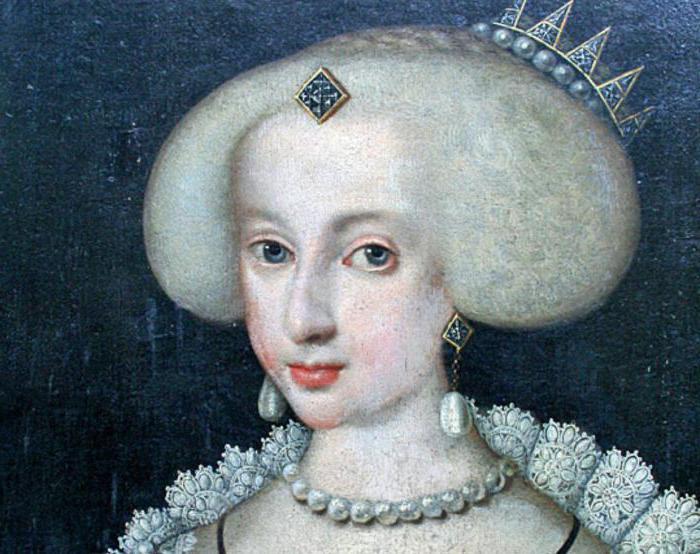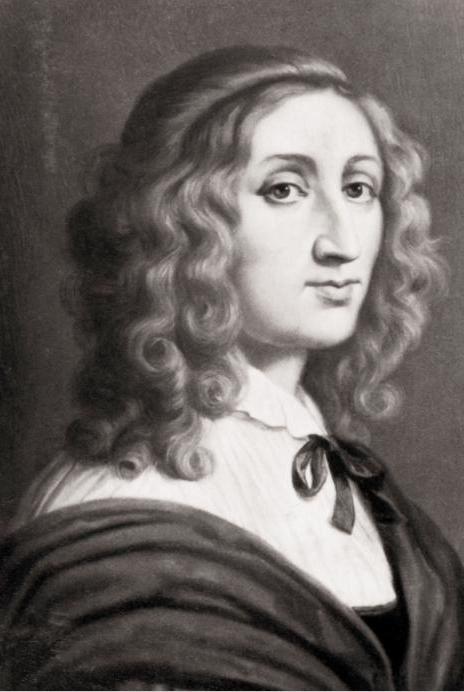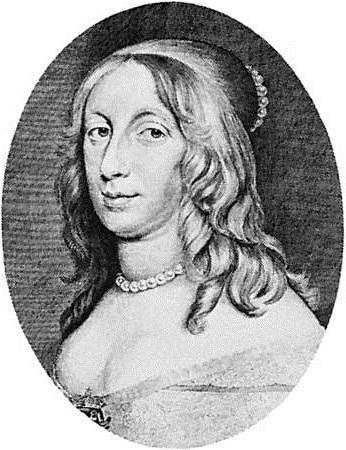The biography of the Swedish Queen Christina (1626-1689), who ruled the country from 1644 to 1654, was and remains one of the most discussed today. Many contemporaries and historians set it as an example as a ruler beloved by the people, while not putting their lives on the altar of public affairs.
The Swedish Queen Kristina is one of those women whose part of life is known to a wide circle of people, but there is no exact data about the other. As a result, many facts of her biography are surrounded by speculation and rumors.
The birth of the future queen
The future Swedish Queen Christina was born on December 18, 1626 (according to the new style). Her parents were Sovereign Gustav II Adolph and the Princess of Brandenburg, Maria Eleanor, during whose pregnancy all the signs known to the then doctors indicated the birth of her son - the future heir to the throne. Numerous fortunetellers and fortune tellers admitted to the court spoke the same thing with one voice.

Even immediately after birth, the courtiers, seeing a newborn baby, mistook him for a boy. Here begins the first discrepancy in the biography of Christina. According to one source, such a conclusion was drawn due to the fact that the child was very large. Others point to an unusually loud voice, which they took as a sign of unusually good boyish health. Third sources indicate that the baby was born with a lot of hair, which was also interpreted in favor of the male. Be that as it may, but King Gustav was informed of the birth of the boy’s heir, about which he dreamed with the queen.
When the real sex of the child was found out, the king was apprehensively told that a girl was born after all. But contrary to all fears, the monarch received this message favorably, and when he first saw his daughter, he said that even if she had deceived the whole royal court at birth, then great achievements would surely await her in the future.
First years of life
The Swedish Queen Kristina, whose biography began so extravagantly, was the daughter of one of the most educated monarchs of her time. He raised a child according to his views on how a real ruler should be. It was her who Gustav saw as the successor to the throne, which he announced to his nobles and subjects - if he does not have male heirs, then Christina becomes queen. The Swedes swore allegiance to her when Christina was only one year old.
Gustav was personally involved in the initial upbringing, which is why Queen Mary-Eleanor, who was waiting for her son, was only glad. Here comes the following ambiguity of the biography. As a child, the Swedish Queen Kristina received several injuries, due to which one shoulder was higher than the other, and noticeable lameness appeared when walking.
According to some sources, this was the fault of the queen, who did not follow the child well enough, while the king had not yet taken up the upbringing of the girl ... Another version suggests that this was facilitated by the father himself, who kept Kristina constantly to himself, but never paid attention, how and where the child could fall from, as a result of which the injuries received remained untreated and left a mark for life.
Queen's childhood and studies
History often consists of coincidences - the descendants might not recognize such a name as Queen of Sweden Christina. The girl’s biography made the first sharp turn after the death of her father - in 1832 Gustav died in one of the battles of the Thirty Years War, without giving the state a male heir. Queen Maria Eleanor was never interested in government affairs, so the Swedish Senate unanimously wished to fulfill the will of Father Christina and approved the girl as head of state, deciding that Count Axel Oksinshtern would become regent until her adulthood. As a mentor, he was an example to Christina in everything, having done a lot to ensure that the young queen received a good education.
Being the worthy daughter of her father, the little heiress to the throne since childhood has amazed contemporaries with the ease with which she learned new knowledge. Foreign languages, arts, exact sciences and history - everything was given to the girl with ease. At the age of 12 she could make a fiery speech in Latin, and Rene Descartes himself was engaged in natural sciences with her, who said that Queen Christina of Sweden was his best student, and remained with her until her death.
The death of the great scientist has become rumored. The official version says that he died of pneumonia due to the harsh northern climate, but there is speculation that he was poisoned, as some courtiers feared his influence on the new queen.
The character of the ruler
In order to obtain the deep knowledge of foreign languages, history, and politics noted by contemporaries, a certain concentration, determination and true love for the very process of learning new things are required from a student during training. Christina had all these qualities in abundance, but besides a brilliant mind, the girl was also brought up by the hardness of character laid down by many generations of royal blood, a critical perception of reality and the right to act only as she sees fit. Her father called her only "king" (and not "queen"). When the girl grew up, only very serious arguments could make her change her decision once.
A great impression on the formation of Christina's worldview was made by her acquaintance with the biography of Elizabeth I - the Queen of England and Ireland in 1558-1603, who was a philanthropist of the arts and sciences and was remembered for her decision not to burden herself with marital ties and any kind of ties with men. As it was, nobody knows, but officially both queens were never married and did not leave children behind.
The regent of Sweden, Count Oksisttern, from an early age began to prepare Kristina for accession to the throne, communicating with her on public issues. The future queen herself showed a keen interest in these topics, and from her correspondence we can conclude that she understood the issue quite well already at the age of twelve.
The beginning of the reign
Long before the coronation, Queen Christina of Sweden actively participated in the life of the state. Thanks to her extraordinary abilities, from the age of 16 she was admitted to meetings of the Senate, where she often made a splash with her statements, opinions and opinions about foreign and domestic policy.
When she turned 18 in 1644, despite having to wait a few more years before the official coronation, the Senate announces to the people of Christina's coming of age, and she de facto becomes the sole ruler of the kingdom.
The coming to power practically did not change the daily routine, which was followed by the Swedish Queen Christina - interesting facts from life scrupulously listed in the memoirs of her contemporaries note, for example, that she woke up at 5 in the morning and often demanded the same from her teacher - Rene Descartes. Personal time was divided between state affairs and further self-development, and the young queen often did not pay attention to conventions. Besides the fact that she often wore men's clothing, finding it more comfortable. Artists could draw any clothes, but if the paparazzi existed at the time when the Swedish queen Christina lived, the photo could well capture ink stains on her dresses, which was a usual occurrence for the ruler.
Rejection of marriage
After coming of age, bearing in mind the untimely death of Gustav, the Senate invites his ruler to marry in order to give the state an heir to the throne. This was supposed to be one of the direct duties of the last representative of the ruling dynasty Vasa, who was Christina, the Queen of Sweden. The 17th century was conservative in this matter, but despite everything, following the example of her idol, Elizabeth I, Christina announced that she was not going to ever get married and have children. This decision shocked the whole of Sweden - from commoners to the aristocracy, who did not want to transfer power to "other" hands. Attempts were made to change the Queen's opinion - the Riksdag was looking for her suitors, whom she rejected with enviable constancy. One of the parties generally seemed perfect to everyone - the queen’s cousin Karl-Gustav, especially since the prince himself was educated (of course, not seven, like Christina herself, but he knew three foreign languages), not bad by himself and fell in love with Christina after they met . The result, however, was still the same - the queen refused to marry, but invited her brother to become the heir to the throne after her.

The lover Karl-Gustav, who at that time was 27 years old, refused, saying that he needed not the crown of Sweden, but the hand of her queen.
Years of rule
To distract the prince from the thought of marriage, which the Riksdag insisted on, Christina sends Karl-Gustav to Germany, where he spent 3 years as commander in chief of the Swedish troops. As it turned out, a long separation did not affect his feelings - the prince did not back down and continued to insist on a wedding. The Queen, for her part, also did not change her beliefs - this also applied to the succession to the throne - she soon drafted documents in the Senate in which Karl-Gustav was appointed successor to the throne.
Offended by his feelings, the prince left the royal court, going to the island of Öland, where he promised to wait until his cousin changed his attitude towards her. We had to wait long enough, since the Swedish Queen Christina did not even remember about him - at first she was absorbed in preparing for the coronation (which took place in 1650), and then the young queen was occupied with official duties.
Christina's foreign policy was first of all marked by the end of the thirty-year war in which her father died. In this matter, she took a diametrically opposite position with respect to her mentor Count Oksisttern, who believed that the continuation of hostilities was beneficial to Sweden. Contrary to him, the queen sends her representative to the German Peace Congress, and the peace treaty was signed. At the same time, historians and contemporaries acknowledge that its conditions were unusually favorable for Sweden - in addition to remaining occupied territories (Pomerania, Bremen, Ferden, the city of Wismar), the peace treaty stipulated receipt of indemnity in the amount of 5 million thalers.
In addition to controlling the hostilities, Christine contributed to the development of culture - with her came a golden time for artists.
Abandonment of the throne
In 1654 an unprecedented event took place - on June 6, at a meeting of the Riksdag, the Swedish Queen Christina delivers a memorable speech of abdication. She says that she doesn’t want to rule the state all her life and goes on a trip to see distant lands, and instead of herself, as expected, leaves her cousin Karl-Gustav king.
As far as all that was said was true, now we can only guess, but according to some indirect signs, it is assumed that not everything was as smooth as described in the official version. The successor to the throne was "appointed" long before the abdication, in addition, the coronation of the new ruler was suspiciously quickly (Karl-Gustav became known as King Charles X) - it passed on the same day as Christina’s resignation.
All this allows us to think that the Riksdag pressed on the queen, trying to force her to marry and give birth to an heir, although according to numerous testimonies, Christina almost panicky avoided her whole life. It is likely that once the question was posed with an edge - get married or free the throne, so Christina found the third option, because after the wedding Karl would still become king, and she would turn into a spouse and mother with him. At the same time, if things had not worked out with the children, then things could have turned out for everyone ... By the way, something similar happened - the new king, despite his "love" for Christina, provided the country with an heir almost immediately, and most importantly, on time because after 5 years he caught a cold and died. Again, the child becomes the king (now a four-year-old), and before his coming of age, the Riksdag actually rules the country.
New life abroad
Italy became the first country where the former Swedish Queen Christina lived after abdication. The interesting facts of her biography did not end with the rejection of power, and the eccentric person began a new life with the transition to the Catholic faith (given the mores of that time, this was a much bigger event than a trip to Italy herself, on horseback and in men's clothes). Thanks to the new religion, Cristina (by the way, after the new baptism she received the name of Augustus) in Italy the Pope himself received well, but after a while he “asked” her from the country, as the former queen became famous as an ardent nihilist - she lived, regardless of with no rules than the Romans set against themselves.

The next country where Christine went was France, always distinguished by free morals. Here, the former queen is also credited with more than frivolous manners - a frequent change of lovers, close ties with other women, and murder (but not with their own hands, but through close ones). True, with the latter, as always, everything is not clear - in those days even the former queen had the right to trial, execution and pardon of her subjects, therefore everything was furnished as the execution of a sentence (there was even evidence that some kind of investigation was underway). But the fact remains - the Marquis of Monaldeschi, according to rumors, was formerly Christina's lover, stabbed with swords, and she herself returned to Italy.
An attempt to return the throne and the last years of life
In 1660, the successor to the former queen, Charles X, died, leaving behind a young son. And again, you can think about the reasons for Christina's abdication of the throne, because after learning the news from her country, she urgently goes to her homeland, where she demands to return her throne. But the Riksdag refuses, since Christina Augusta now has a different religion, and Sweden now has an heir (and with the old queen this question would hardly have been resolved).
After the Senate rebuffed, the last years of the life of the former Swedish Queen Christina (1626-1689) passed in Italy, and quite calmly. She patronized musicians, poets and artists until the end of her days. Christine-Augustus died on April 19, 1689 and became one of the three women buried in the Roman Cathedral of St. Peter.